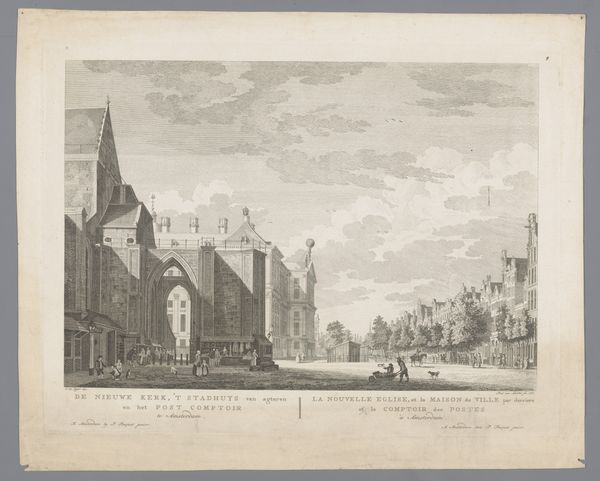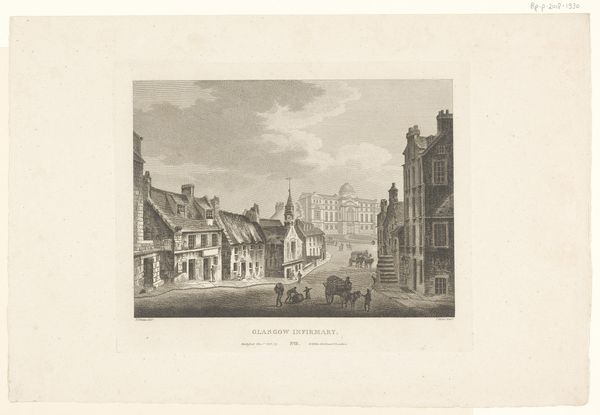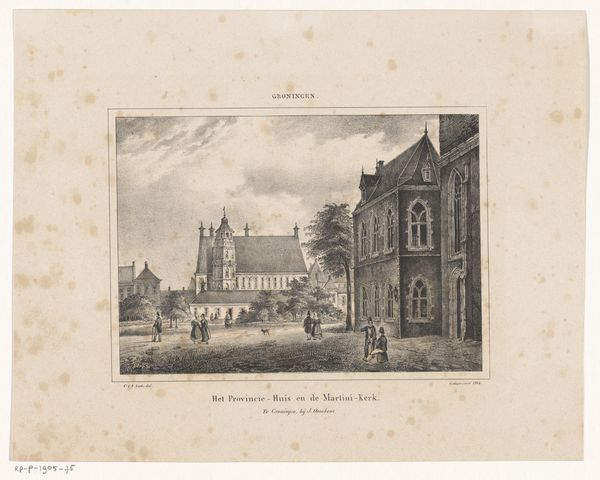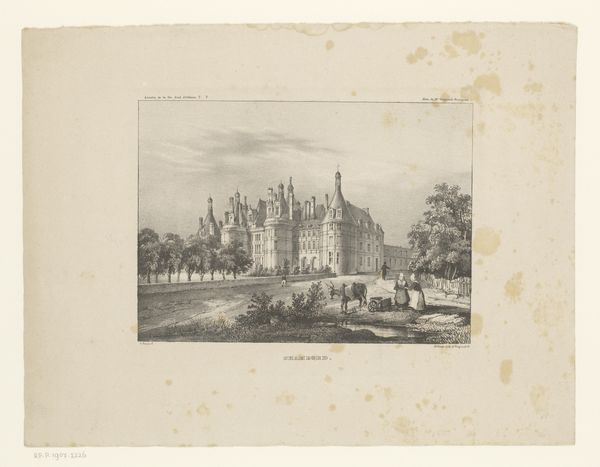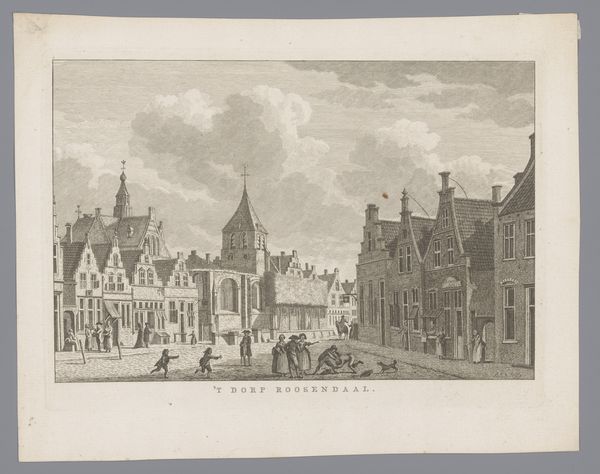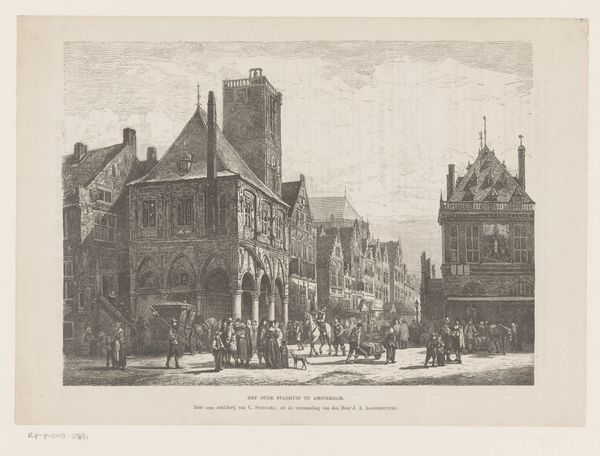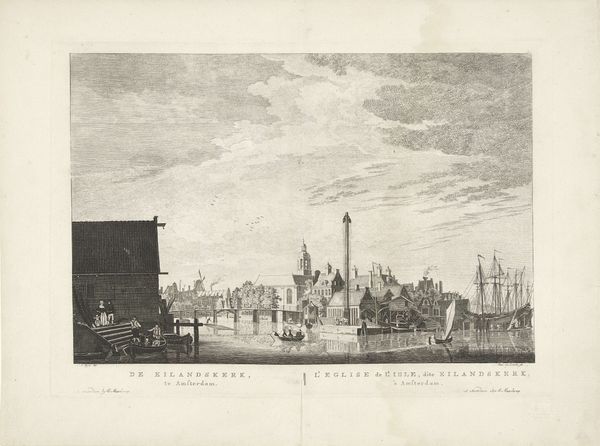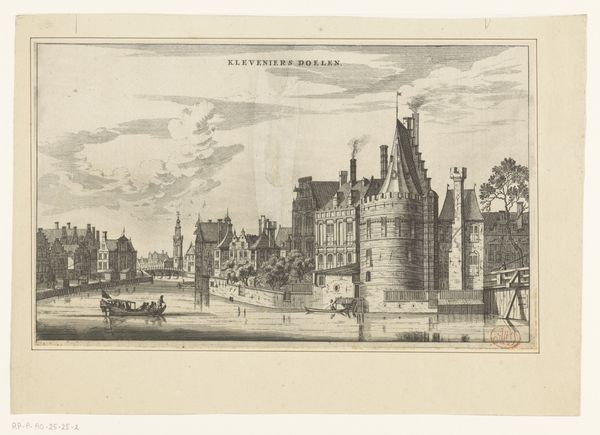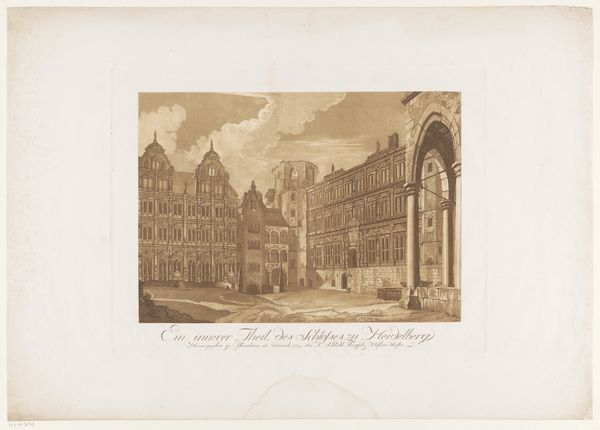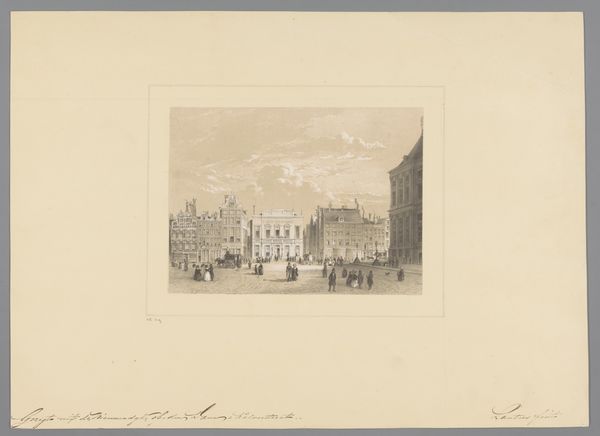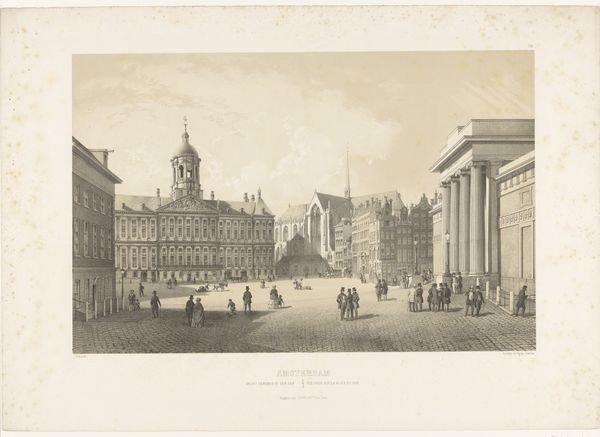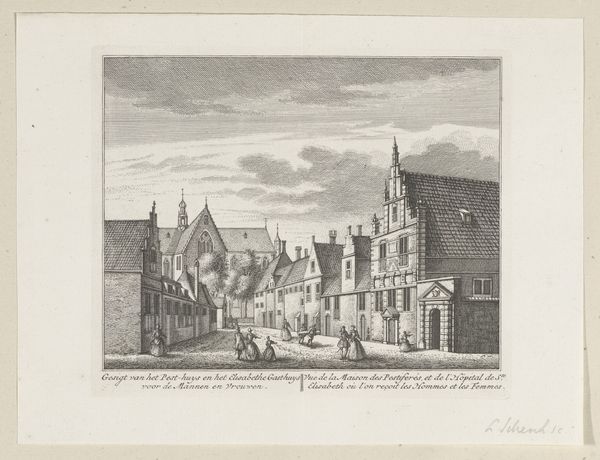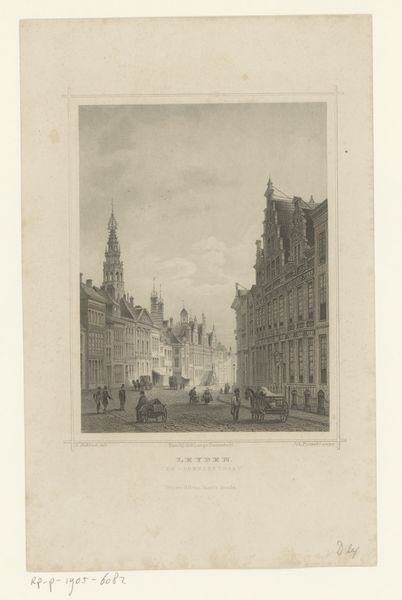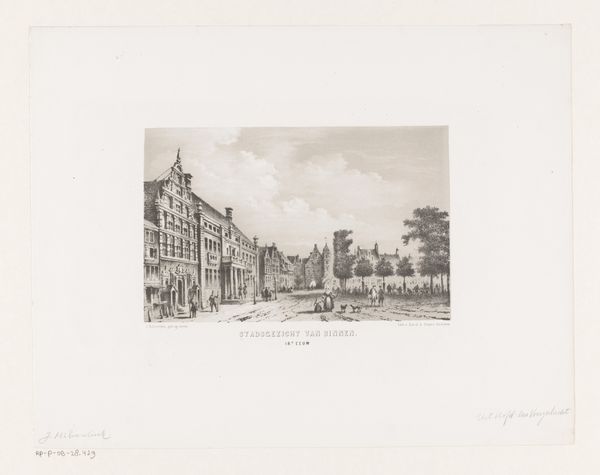
Dimensions: height 399 mm, width 568 mm
Copyright: Rijks Museum: Open Domain
Editor: This is Louis Jules Arnout's print, "Zicht op het universiteitsgebouw King's College in Cambridge," from about 1855. It's incredibly detailed! It really captures a sense of the era with the people and carriages. I'm curious, as someone who studies how institutions shape art, what do you make of a piece like this? Curator: It's a fascinating image because it highlights the role of institutions in shaping not just artistic production but also public perception. Consider the context: mid-19th century, Britain is at the height of its imperial power, and here's a depiction of one of its most prestigious universities. What's the function of distributing this print to the broader public, do you think? Editor: Perhaps it's a way of promoting and celebrating British institutions? It does seem to idealize King's College, doesn't it? Curator: Precisely. It contributes to the creation of a national narrative. Engravings like this one, reproduced and distributed widely, played a crucial role in solidifying the image of Britain's cultural and intellectual prowess. Notice the figures in the foreground, carefully positioned to evoke a sense of activity and prestige. Consider also, who likely had access to education and opportunity at Kings College, and how might that reflect social stratification? Editor: That's a great point! It’s creating a specific story. And also, seeing this reproduced widely would help create an ideal of higher education that many couldn’t access, highlighting class divisions in the broader public sphere. Curator: Exactly! This engraving isn’t just a picture; it's a carefully constructed piece of visual rhetoric. It is interesting to ask how public access to such elite institutions has changed - or hasn’t - since Arnout made this work. Editor: I've definitely gained a new perspective on how art like this functions within a broader social and political landscape! I never considered how intentionally these images can be shaped. Curator: And understanding that helps us decode not only the art of the past but also the visual culture that surrounds us today.
Comments
No comments
Be the first to comment and join the conversation on the ultimate creative platform.
